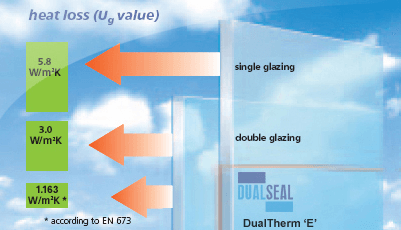Glass And Thermal Insulation
Thermal exchanges
Whenever differences in temperature exist between surfaces, heat will migrate from the warmer area to the cooler area.
This is true of all surfaces. However, a glazed surface is special in that it is also transparent to solar radiation, which results in free heat gain.
Heat exchanges through a surface
Heat is exchanged through a surface and hence lost in any of 3 different ways:
Conduction
Is the transfer of heat within a body or between two bodies in direct contact. No material is physically moved during this type of transfer. The heat flow between the two faces of a sheet of glass depends on the temperature difference between the faces and the thermal conductivity of the material.
The thermal conductivity of glass is : Ï = 1.0 W/(m.K)
Convection
Is the transfer of heat between the surface of a solid and a liquid or a gas. This type of transfer involves movement via circulation.
Radiation
Is the transfer of heat by radiation between two bodies at different temperatures.
At ambient temperature, this radiation takes place in the infra-red band of the spectrum, at wavelengths above 5 µm. It is proportional to the emissivity of these bodies.
-emissivity is related to the surface characteristic of a body. The lower the emissivity, the weaker the heat transfer.
The normal emissivity εn of glass is 0.89. Certain types of glass can be modified by means of a low-emissivity coating, in which case εn can be as low as 0.02.
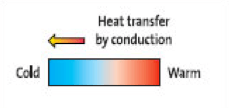
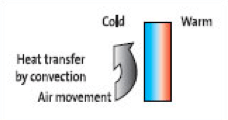
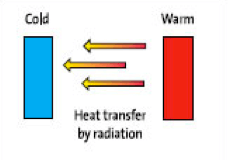
Surface exchange coefficients
A surface will exchange heat with the air it is in contact with by conduction and convection. It will also exchange heat to its surroundings by radiation.
Normally, these heat transfers in the field of building and construction are related to wind speeds, temperatures and levels of emissivity. They are characterised by he for external exchanges and hi for internal exchanges.
The standard values for these coefficients are : he = 23 W/(m2.K) hi = 8 W/(m2.K)
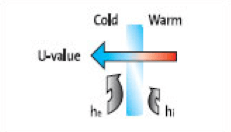
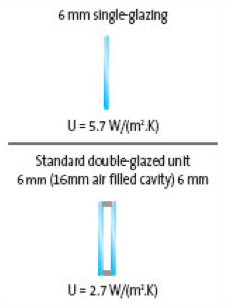
Thermal transmission of a surface
U-value
It is calculated using the surface exchange coefficients he and hi defined above and in accordance with BS EN 673. It is possible to calculate a specific U-value* by using design values of the surface exchange coefficients, which will take into account environmental variants, such as wind speed. The lower the U-value, the lower the heat loss.
The u-value* of glazing
Double-glazing affords better thermal insulation than single glazing. The principle behind double-glazing is that by enclosing a cavity of dry, still air between two sheets of glass, heat exchange by convection is reduced and the low thermal conductivity of the air limits heat loss by conduction.
* U-value according to European standards, formerly known as the K coefficient in some countries.
Heat transmittance through a surface by conduction, convection and radiation is expressed by its U-value*. This is the rate of heat loss per square metre for a temperature difference of 1 degree Kelvin, or Celsius, between the interior and exterior.
Improving the u-value of windows
- Radiated heat transfer can be reduced by using glass with a low-emissivity or low-E coating.
- Heat loss by conduction and convection can be reduced by replacing the air in the unit cavity with a gas with lower thermal conductivity (generally argon).

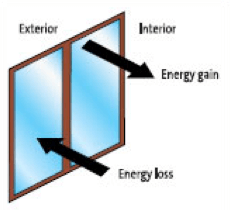
Energy balance
The overall energy balance of a window equals the solar energy heat gain minus the heat loss. In heating dominant environments, the most energy efficient windows reduce thermal losses to a point at which they are exceeded by solar heat gain, thus becoming a net contributor of energy. The energy efficiency of windows in temperate climates is further discussed under “Window Energy Ratings”
Windows are a source of both heat loss, measured by the U-value, and solar energy heat gain, represented by the solar factor.
Thermal comfort
Increased wall temperatures
The human body exchanges heat with its surroundings by radiation. When standing near a cold wall, even if the room temperature is comfortable, we sometimes have the sensation of standing in a draught. In winter, the temperature of the interior face of a window with a low U-value is likely to be higher, thus reducing what is termed as the “cold zone effect” around the window.
Therefore:
- we can stay closer to windows without feeling uncomfortable
- there is less risk of condensation.
